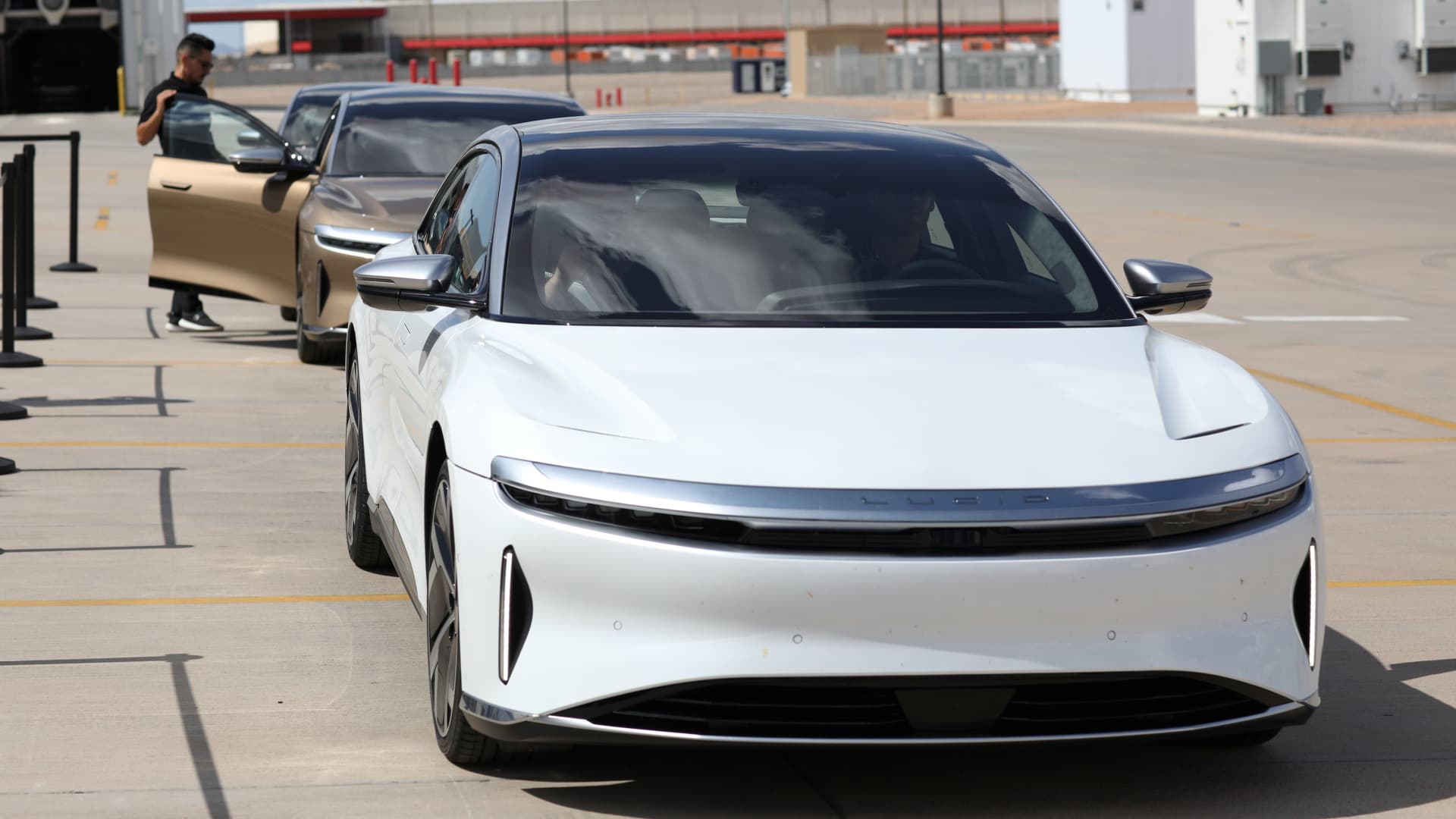Luxury electric vehicle maker Lucid appears to have a demand problem.
The company said during its fourth-quarter earnings report Wednesday that it had “over 28,000” reservations for its Air sedan as of Feb. 21. That was a surprise, given that the company had claimed “over 34,000” reservations in November and delivered fewer than 2,000 vehicles in the fourth quarter.
Even more surprising: Lucid said it plans to build just 10,000 to 14,000 vehicles in 2023, far fewer than the roughly 27,000 Wall Street analysts had expected — and than the roughly 34,000 vehicles per year that Lucid’s factory is set up to build.
Shares of the company have fallen about 15% since the Wednesday report.
Lucid faced a rough road getting the Air into production. The company spent much of the first half of 2022 scrambling to secure key components and untangling logistics snags. Now, with production running more or less smoothly, it seems to be facing a new problem: Not enough of its reservations are converting to orders.
CEO Peter Rawlinson acknowledged as much during the earnings call when he reminded listeners that reservations aren’t binding.
“We’ve solved production. That is not the gating issue here now,” Rawlinson said. “My focus is on sales. And here’s the thing: We’ve got what I believe to be the very best product in the world. … Too few people are aware of not just the car, but even the company.”
Rawlinson went on to say he believes that to be an “entirely solvable problem” and plans to focus on “amplifying customer awareness” in 2023.
More marketing might help. But clearly, demand for Lucid’s vehicles isn’t materializing as quickly as the company expected, which raises some tough questions for investors.
First, how big is Lucid’s potential market? Any estimate of how much Lucid could grow has to start with an estimate of the “total addressable market,” and it appears the company’s estimates on that front may have been too rosy, given that its factory is set up to produce many more vehicles than it’s building now.
Running an auto factory well below capacity isn’t exactly a route to profitability, as Chief Financial Officer Sherry House conceded during Lucid’s earnings call.
“As we produce vehicles at low volumes on production lines designed for higher volumes, we have and we will continue to experience negative gross profit related to labor and overhead costs,” House said.
That leads to a second, related question: How long will Lucid have to run its factory at a loss? Or, put another way, how long will it take Lucid to get to profitability — and how much money will it have to raise between now and then?
Bank of America analyst John Murphy has long been bullish on Lucid, but in a note to investors following Lucid’s earnings report, he cut the bank’s rating on the stock to hold, from buy. Murphy wrote that he now thinks Lucid won’t break even before 2027, and that the company will need to raise more capital sooner than he had previously expected.
The good news is that Lucid has a deep-pocketed investor. Saudi Arabia’s Public Investment Fund owns about 62% of Lucid, and has shown — most recently in December, when it invested an additional $915 million — that it’s still willing to fund the company. As long as it has the Saudi fund’s backing, Lucid should be able to keep going.
But the road to profitability — and to a big payday for Lucid’s investors — is now looking longer.
